18 Best Towns and Villages in West Lothian and Midlothian
The Lothians are made up of West Lothian, Midlothian and East Lothian. This post explores the towns and villages in West Lothian and Midlothian that you can visit.
Midlothian and West Lothian are great counties in Scotland to visit.
All the towns and villages in the Lothians are close to the capital city of Edinburgh. Throughout the counties, there are plenty of choices for places to go for the afternoon or day.
Many towns and villages are located within easy reach of each another. So it is possible to combine a few destinations in one day.
Each town and village in the Lothians is very welcoming. There are family-run independent shops, restaurants, cafes and pubs where you can enjoy the finest local produce.
West Lothian
West Lothian is a county which is easy to reach from Scotland’s two main cities. There is plenty of green space available for walking, including the Bathgate Hills and Pentland Hills for keen hikers.
The area is rich in heritage and there are many historical attractions on offer. Visitors can explore stately homes, ruined castles and palaces from centuries ago.
Armadale
Armadale is located in the southwest of West Lothian and has 11,000 people living there. The town was originally a farming community before becoming a mining community in the 19th century.
The Goth is a public house located on Main Street. It has been open since 1911 and was designed according to the Swedish Gothenburg System, to counter rising alcohol consumption.
There are plenty of countryside walks near Armadale. You can head to Hardhill Wood for spectacular views over Bathgate Hills or go to Black Moss to explore woodlands and ponds.
In addition, Polkemmet Country Park is nearby. For some thrills on a Friday night head to Armadale Speedway for some speedway racing.
Things to do in Armadale
- Mill Garden Centre
- Edinburgh Monarchs Armadale Speedway
- The Goth
- Bathgate Hills
- Polkemmet Country Park
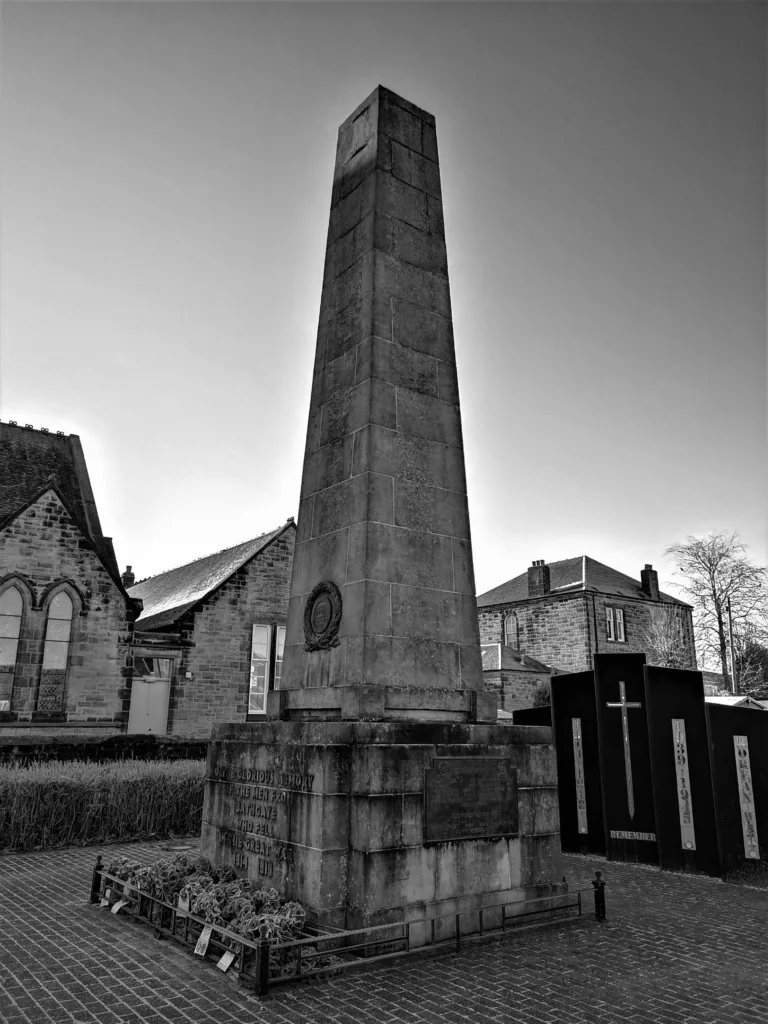
Bathgate
Bathgate was first established in the 12th century as a local centre for religious and civil authority. In the 16th century, Bathgate was a centre for weaving.
Nowadays, there is an excellent range of cafes and restaurants as well as small independent retailers. Keen anglers can enjoy some fishing at Ballencrieff Fishery.
Visit the Bennie Museum to learn more about Bathgate’s history. The permanent exhibition is located in a small cottage.
Things to do in Bathgate
- Tailend Moss
- Bennie Museum
- Cairnpapple Hill
Broxburn & Uphall
Originally these two communities were heavily involved in farming. In 1852, the discovery of shale oil led to the communities growing rapidly and merging together.
Nowadays the settlement is a popular commuter town as to is close to Glasgow, Edinburgh and Stirling. The Union Canal stretches across the Central Belt of Scotland and cuts through Broxburn, the waterway path is excellent for cyclists, runners and walkers.
Just beyond Broxburn are Almondell and Calderwood Country Park. There is a visitor centre and chances to spot roe deer, herons or woodpeckers through the 227 acres of woodland.
Next to Uphall is the small hamlet of Dechmont. Climb Dechmont Law which has a summit of 217 metres. There are great views of Arthur’s Seat, the Pentland Hills and a view down the Almond valley.
Things to do in Broxburn & Uphall
- Almondell & Calderwood Country Park
- Stewartfield Park
- Dechmont Law
East Calder
Originally, East Calder was established as a market town. Mainly used by cattle merchants to transport their cattle from Edinburgh, the Highlands, Crieff and nearby Falkirk.
In 1846, the population of East Calder grew due to the railways and the discovery of shale oil in the area. Nowadays, the village is perfect for a stroll or nature enthusiasts.
Two very important historical buildings in the town are the old ruins of 16th-century St Cuthbert’s Parish Church and Ormiston Hall.
East Calder is near Almondell and Calderwood Country Park which is a great place to go for an outdoor walk and to enjoy nature. Also, for those garden lovers, head to Almondell Garden Centre to view brilliant plants and garden products.
Things to do in East Calder
- Cuthbert’s Parish Church
- Ormiston Hall
- Almondell and Calderwood Country Park
- Almondell Garden Centre
Fauldhouse
Fauldhouse is one of the highest villages in the West Lothian area, located 750 feet above sea level. In the 1830s, mining began in the area.
For the next 100 years, Fauldhouse was a mining village, with up to 20 pits operated in the local area, the last closed in 1974. Nowadays, the village is a commuter town for Livingston, Edinburgh and Glasgow.
Things to do in Fauldhouse
- Greenburn Golf Course
Kirknewton
It is believed that there have been settlements near Kirknewton since the Iron Age. On Kaimes and Dalmahoy Hill to the east Iron Age Forts have been discovered.
Kirknewton House was constructed in the 17th century. Architect William Playfair reworked the current house in 1835.
In the 1860s, the area was transformed by the shale oil industry. During World War II, an RAF military airfield was built at Whitemoss.
Jupiter Artland is a must-visit contemporary sculpture park and art gallery. The outdoor art gallery is located on the grounds of Bonnington House.
Things to do in Kirknewton
- Potter Around
- Military Museum Scotland
- Jupiter Artland
Livingston
Livingston is the largest town in West Lothian. The settlement was established when Scotland’s New Towns Act was passed in 1946 to ease overcrowding and Livingston was one of the five towns created.
This is a pretty village and you can wander down Main Street and view the original miner’s cottages, small shops and restaurants.
The Designer Outlet is very popular with visitors and locals. There is a wide range of attractions for families including Adventure Golf, Ten Pin Bowling, Xcite, Delta Force Paintballing and a Skatepark.
Things to do in Livingston
- Howden Park Centre
- Deer Park Golf and country club
- Xcite Livingston
- Delta Force Paintball
- Eilsburns Park
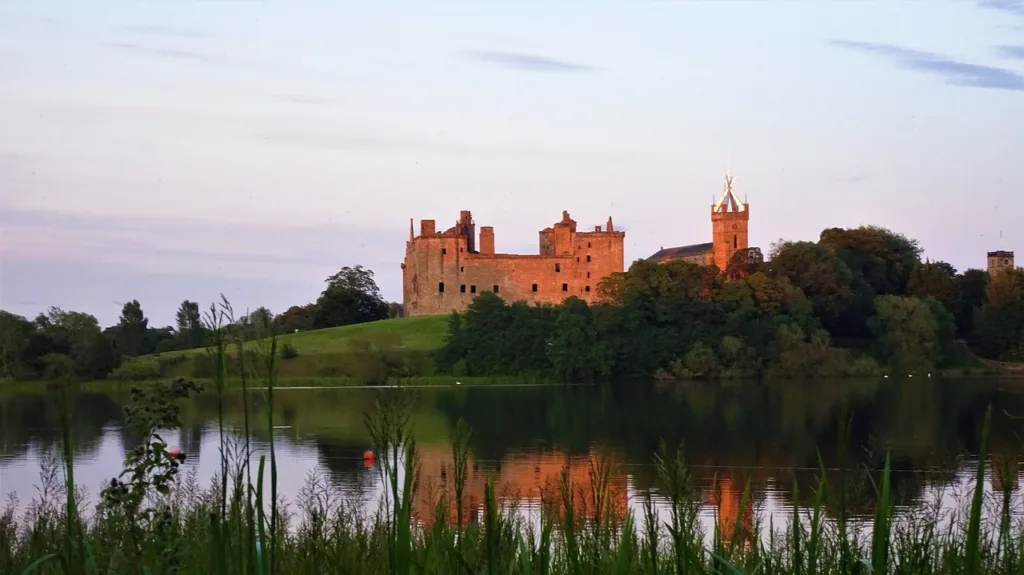
Linlithgow
This town is home to Linlithgow Palace, the birthplace of Mary Queen of Scots. Linlithgow Palace is a 15th-century ruin which is located next to Linlithgow Loch.
At the Linlithgow Museum, visitors can learn about the rich history of the Royal Burgh of Linlithgow. There is so much to learn about including the Royal connections, people who lived and worked there over the centuries and what they town traded.
St Michael’s Parish Church is located opposite Linlithgow Palace. The church is a good representation of a surviving medieval church in Scotland.
In addition, Linlithgow is a great place to base yourself to explore historic residences and stately homes. Make sure to visit Blackness Castle, House of Binns and Hopetoun House.
Linlithgow Burgh Halls is a good place to go for Art Exhibitions, venue hire and events. Also, Linlithgow is not to far from Beecraigs Country Park where you can enjoy a relaxing stroll through the woodland.
Things to do in Linlithgow
- Linlithgow Palace
- St Michael’s Parish Church
- Blackness Castle
- House of Binns
- Hopetoun House
- Linlithgow Burgh Halls
- Beecraigs Country Park
Mid Calder
Mid Calder is a small charming village with a population of 3,300 people. Long ago, the village was one of Scotland’s most important thoroughfares serving cattle drovers from the Highlands to sell their cattle at markets in Crieff and Falkirk.
The cattle would move in droves along the roads to England. The railways arrives in 1846 and there was a shale oil boom in the region which brought prosperity and growth to the area.
Nearby, visitors can enjoy a pleasant stroll on one of the nature trails at the Almondell and Calderwood Country Park. Also, you can visit the Kirk of Calder, a church that has beautiful stained glass windows and has existed since the 12th century.
Calder House is a 16th century mansion located next to Kirk of Calder.
Things to do in Mid Calder
- Kirk of Calder
- Morton Clay Targets
- Almondell and Calderwood Country Park
- Cunnigar Hill
- Calder Wood
Torphichen
Torphichen is a small ancient pretty village location in the gently rolling Torphichen Hills. It is believed that at first there was an ancient settlement that existed.
This settlement was founded by St Ninian, in 400CE. The church was rebuilt in 1756.
There is a couple of historical ancient buildings in the village. These buildings include St Johns Hall which is used as a Church Hall and Torphichen Preceptory.
Things to do in Torphichen
- Cairnpapple Hill
- Torphichen Preceptory
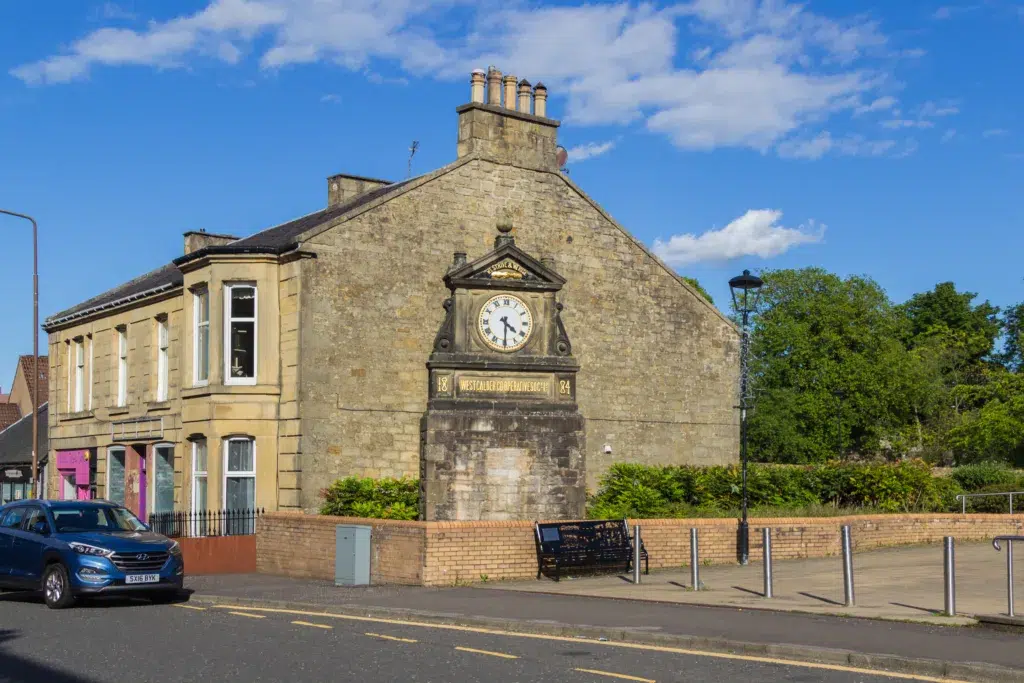
West Calder
West Calder is another traditional village in West Lothian with a population of 3,250. The settlement expanded with the discovery of shale oil in the 1860s.
In 1947, at Burngrange Pit there was an explosion. A memorial is now present in the town centre to pay tribute to the miners.
West Calder is a nice village and a walk through the High Street will allow you to see the mid-20th century buildings. The oldest building is the Co-op which is made from red stone and was built in 1913.
The 17th-century parish church is available to see a few streets away from the High Street. There is a nice range of independent retailers and coffee shops.
Things to do in West Calder
- Five Sisters Zoo
- Harburn Golf Course
- Almond Valley Heritage Centre
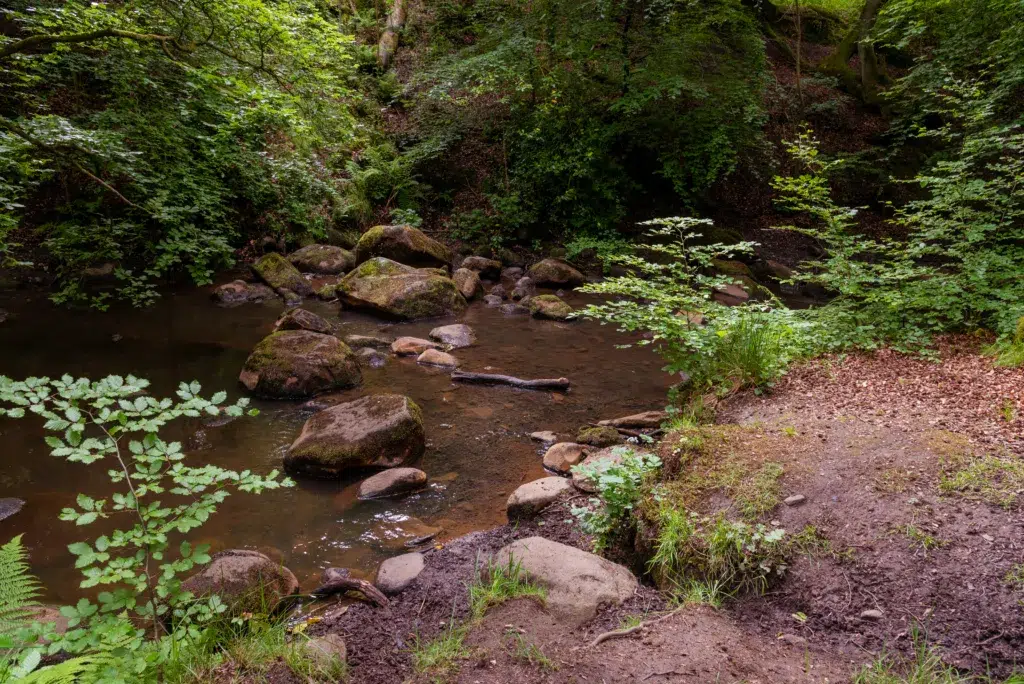
Whitburn
Back in the 20th century, many people in the community were employed by coal mining and clothing factories. Nowadays, the small town is mainly a commuter town for Glasgow, Livingston and Edinburgh.
If you enjoy the outdoors and nature, head to Polkemmet Country Park and the Scottish Owl Centre. Across the 169 acre park there is plenty of walking trails that will keep you occupied.
Things to do in Whitburn
- Polkemmet Country Park
- Scottish Owl Centre
- Beechbrae Woodland Centre
- Longridge Moss
Winchburgh
Winchburgh is famous for the shale oil industry which strived in the 19th century.
The village is growing and is shaped by beautiful countryside. It is believed that people have settled in the Winchburgh area for over 1000 years.
Like many of the other villages in West Lothian, Winchburgh is a commuter village for those working in Edinburgh and Glasgow.
Niddry Castle is a 14th-century tower house. Duntarvie Castle is a Scots Renaissance house which lies just north of Winchburgh.
Things to do in Winchburgh
- Niddry Castle
- Duntarvie Castle
- Winchburgh Medal Route
- Winchburgh Canal Walk
Midlothian
Midlothian is a region located south of Edinburgh. The area offers beautiful rolling green hills and large expanses of thriving woodland.
On a day trip to Midlothian, you can visit one of the castles or country parks. Also, enjoy a walk in the Pentland Hills or play golf.
Midlothian is a good place to base yourself to explore Edinburgh, East Lothian or the Scottish Borders.

Roslin
Roslin is a tranquil village which lies a few miles south of Edinburgh. The small village has a population of almost 2,000 people.
Roslin is famous for Rosslyn Chapel, which escalade to fame due to the best-selling book The Da Vinci Code. Rosslyn Chapel is a mysterious richly decorated late-Gothic building.
Roslin has another claim to fame, this is where Dolly the Sheep was cloned in 1997. Visitors can enjoy nature on one of the waymarked trials in Roslin Glen.
Things to do in Roslin
- Rosslyn Chapel
- Rosslyn Glen
- Roslin Gunpowder Factory
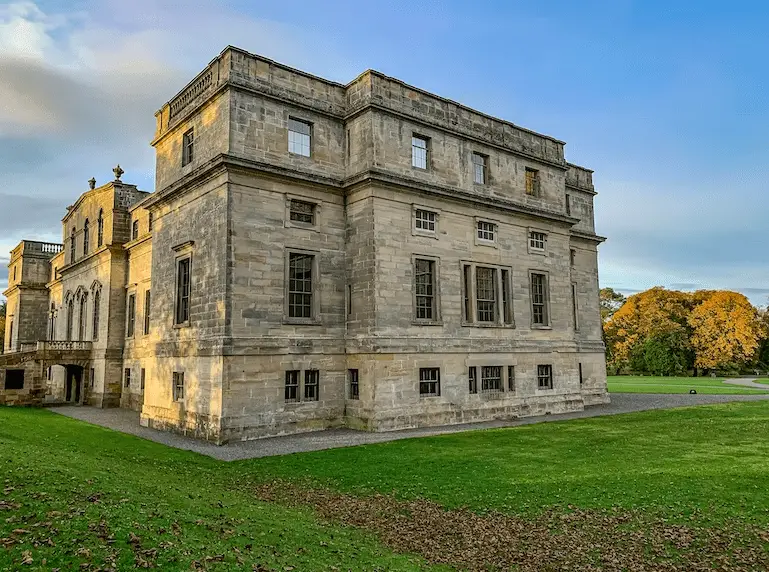
Penicuik
Penicuik is the main town in Midlothian with a population of around 25,000 people. The town is located on the River Esk, it is known as the gateway to the borders and is not far from Edinburgh.
The town hall is an impressive architectural landmark which dominates the High Street. The paper making industry was popular during the 20th century.
One of the main attractions is Penicuik House which was associated with Robert the Bruce. The estate has lovely walks to follow.
Midlothian dry ski slope is located 10 minutes away from Penicuik. Also, at Penicuik you can visit the Newbattle Abbey where the treaty of Arbroath was written up and it is also the first coal mining site in Scotland.
Things to do in Penicuik
- Midlothian Snow Sports Centre
- Penicuick House
- Newbattle Abbey
- Pentland Hils Regional Park
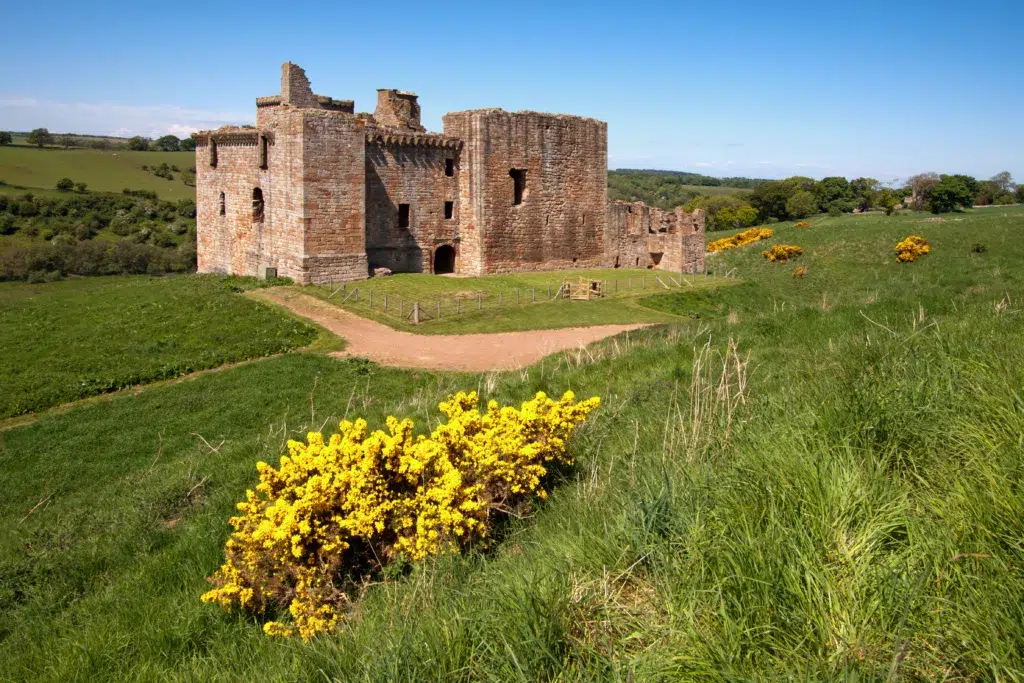
Gorebridge
Gorebridge is a former mining village in Midlothian, the population stands at approximately 8,000 people. The name of the village is from the bridge that crosses River Gore.
During the 18th century, the village expanded due to gunpowder production and expansion in the coal mining industry in the area. By the 19th century, Gorebridge was mainly a holiday resort.
You can explore nature on a two mile wooded trail in Gore Glen Woodland Park. In Gore Glen, there is a shallow cave named ‘The Kings Cave’.
Also, Vogrie Country Park is nearby. There are over 105 hectares of ground in Vogrie Country Park plus a Victorian mansion which was built in 1876.
Arniston House is a Palladian style mansion which was designed by famous architect William Adam. For over 400 years, the Dundas family have owned and lived at the property.
Tours are available to view the house, also it is a great venue for a wedding or an other event. Alternatively, visitors can explore the tranquil grounds including the Sunken Garden with great views across to Edinburgh and Arthur’s Seat.
Things to do in Gorebridge
- Vogrie Country Park
- Arniston House
- Gore Glen Woodland Walk
- Borthwick Castle
- Crichton Castle
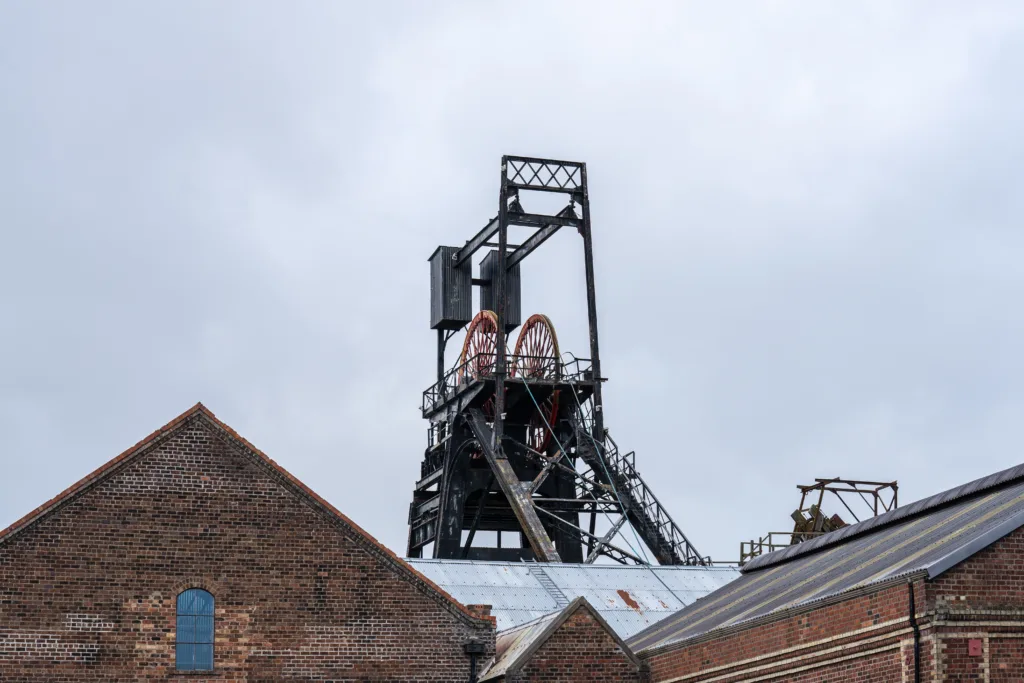
Newtongrange
Newtongrange has a population of approximately 5,300 people. The settlement is now a former mining village.
You can learn more about the mining past in the National Mining Museum Scotland. The museum is set at the former Lady Victoria Colliery and is a great way to discover what life was like for the miners that worked there.
Things to do in Newtongrange
- Borders Railway
- National Mining Museum
- Dalhousie Castle Hotel and Aqueous Spa

Dalkeith
Dalkeith is one of the larger settlements in Midlothian, the town has a population of approximately 12,000 people. The town is located on the River Esk and is the administrative centre for Midlothian.
Dalkeith grew in the Middle Ages as a baronial burgh under the successive control of the Dunglases and Buccleuchs. Dalkieth House is a large stately home which was been standing since the 12th century.
Things to do in Dalkeith
- Dalkeith Country Park
- Dalkeith Museum
- Butterfly and Insect World
Other Settlements in Midlothian:
- Bilston
- Bonnyrigg
- Borthwick
- Lasswade
- Loanhead
- Mayfield
- North Middleton
- Rosewell
What areas are in Lothian?
The Lothians consists of three counties – Midlothian, West Lothian and East Lothian. The Lothians are in close proximity to Edinburgh to have good transport links to the Scottish Borders and the Central Belt.
What is West Lothian known for?
West Lothian was a popular place to live in the 20th century due to the discovery of shale oil in the area. Many villages increased in size during this period as people moved here for work.
Nowadays, the villages and towns of West Lothian are popular places to live due to their location on the central belt. West Lothian is good transport links to Edinburgh, Stirling and Glasgow.
What is the main town in West Lothian?
Livingston is the main town in West Lothian with a population of approximately 56,840 people. Livingston was one of the five post war new towns that were built to solve overcrowding in the main cities.
How many towns are in West Lothian?
There are 36 towns, villages and hamlets in West Lothian. Approximately 10 of these settlements meet the status of a town.
How many towns are in Midlothian?
There are 26 towns, villages and hamlets in Midlothian.
What is Midlothian Scotland Known For?
Midlothian is area area which is rich in natural and industrial heritage.
What is the main town in Midlothian?
Penicuik is the main town in Midlothian. The town has a population of 16,000 people.
Dalkeith is the administrative centre for Midlothian. The town has a population of 12,000 people.
Final Note
This post lists the best 13 towns an villages in West Lothian and the 5 of the best towns and villages in Midlothian to visit. There is a wide range of visitor attractions and places to stay, eat and drink in the Lothians.
West Lothian is a popular place to live for those who are commuting to work in the Central Belt. A lot of villages grew in size during the 20th century due to the discovery of shale oil.
A lot of attractions explore the history of West Lothian and are perfect of nature or wildlife enthusiasts. The county are doing its best to conserve wildlife and the culture.
Simply walking through the traditional villages is a good way to spend the afternoon. You can try and imagine what life was like for those that lived here and who lived here centuries ago or were involved in the the farming and coal mining industries.
Midlothian has a lot of natural and industrial heritage. It is popular due to the close proximity to Edinburgh and easy access to the Pentland Hills.
